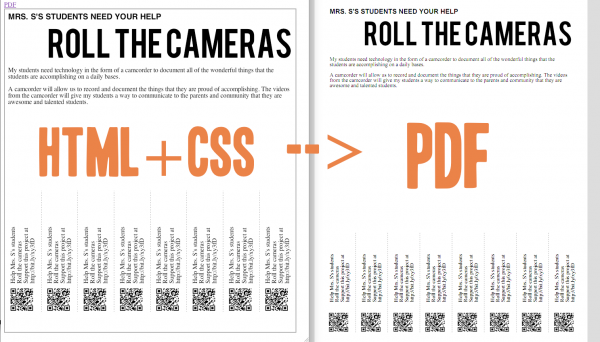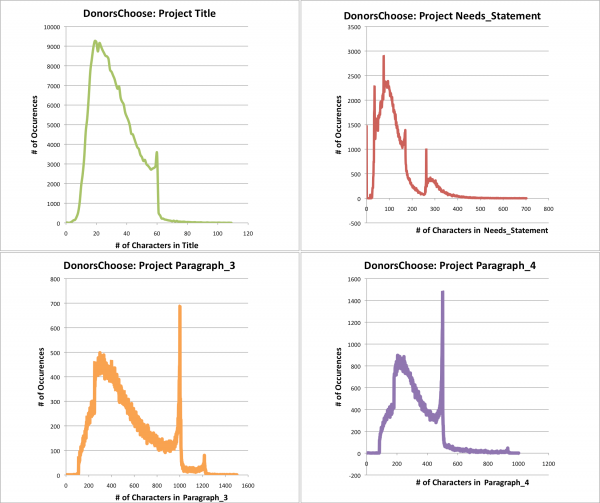The following excerpts is from a paper Lenore T. Ealy and Steven D. Ealy entitled “Progressivism and Philanthropy”, published in The Good Society. Author Stephen D. Ealy is a senior fellow at the conservative Liberty Fund, so take this article’s purpose “to understand how we might best articulate a new rationale for philanthropic enterprises that are today working to return social responsibility to local communities and to support the emergence of new forms of mutual aid and voluntary action” with salt:
For the Progressives, many of whom had roots in Republican reformism, charity was an ineffective and insufficient system for promoting the general welfare and for ameliorating perceived economic and social injustice. At the heart of the Progressive diagnosis of the problem was a view of charity as an unsystematic, temporary, and superficial ointment that failed to address the root causes of problems. Many commentators thought that charity might improve conditions for the individual but left undisturbed the diseased social order that contributed to poverty. Some commentators went further in their critique, arguing that charity not only failed to assist even its recipients but left them increasingly in a state of pauperization, dependent on the handouts of others. For other reformers, the voluntary decentralized nature of charity administration led to needless duplication and waste.
[…]
Contributing to the diagnosis and prescription for charity reformation were several currents that further eroded more traditional views that rooted charity in the soil of religious obligations and the practices of mutual aid and charity. The emerging Social Gospel movement merged secular and religious concerns into what was perceived as a “higher” form of Christianity and demanded more wholesale remediation of social ills. The moral fulcrum of aid was no longer to be the personal discretion of givers about the moral fitness of a recipient but was to be anchored in a postmillennial pietism that sought to build the kingdom of God on earth.
Defining pauperism and justice in broadly social terms required looking for environmental and structural, as opposed to moral, causes of pauperism. The pursuit of structural problems and solutions eliminated the need for distinctions between the deserving and undeserving poor that had not only guided Victorian philanthropists but had also been a useful tool for mutual aid and other cooperative societies that depended on expectations of reciprocity among deserving, if occasionally unfortunate, peers.
The movement from the moral world of charity to the moral world of social activism displaced the virtue of liberality expressed in gift-giving and traditional forms of mutual aid and voluntary association. By elevating the state as the central agent for the distribution of welfare goods, the Progressives paved the way for the displacement of dispersed, conscientious, personal judgment of citizens by the centralized, rationalized, professional administration of civil servants.
[…]
III. Social Science and Modern Philanthropy
The Progressive-era confidence in social scientific technique as a means of social control informed the changing view of the role of philanthropy in society. The quest for a more “scientific philanthropy” shared the Progressive desire to diagnose and treat through orderly systematic means the “root causes” of poverty. Government was seen by many as a benign and appropriate partner in this pursuit.
As early as 1899 it was common to define as philanthropists not merely those among the wealthy who endowed foundations but “all persons who have devoted themselves in any systematic way to charitable or educational work.” Joseph Lee argued that philanthropists had “a duty to perform in the systematic study and promotion of progressive social legislation.” For Lee, this “promotion” could include calling in experts to advise on the implementation of beneficial legislation and to develop rational programs and measures for the “cure of all social ills.”
Writing in The Atlantic Monthly in 1900, Charles Richmond Henderson suggested that the application of science in philanthropy required greater “practical coordination of the special knowledge of economists, lawyers, physicians, [and] educators.” This coordination would be best realized by centralizing supervisory power over charitable institutions in state level boards and by promoting the principles of civil service reform in charitable and correctional institutions to ensure that they were in the hands of trained administrators.
Edward Devine surveyed the field of “voluntary philanthropy” in 1913 and identified three principal strands worth considering: “those programs which have to do with making governmental action more effective, or extending its sphere,” “foundations for the study of and improvement of social conditions,” and “these philanthropic agencies which our generation has inherited, such as hospitals, relief societies, orphan asylums, and the like.”
Devine identified the latter class of organizations as those that would preserve “the ideal of an independent citizen of an industrial democracy, earning his own living, providing for his own emergencies, and relying for support even in old age on the accumulated savings of his productive period.” By contrast, the bureaus of research and various reform agencies falling into the first class of organizations were those that sought to improve conditions not primarily for individuals but for society as a whole. Participants in these organizations “looked toward better government as a prime means of securing social welfare reform.” This did not imply paternalism but reflected “the deliberate intention to use the governmental machinery for the doing of those things for which experience shows it to be more efficient and more economical than any other means yet devised.”
Interestingly, Devine was agnostic about the future of the emerging foundations and believed that for the most part they were conservative institutions that were more comfortably aligned with traditional charity organizations than with emerging reform agencies. Devine suggested that the foundations for the most part represented the vested interests of old wealth more than the well-being of future generations and claimed that “their natural attitude toward state action for the social welfare is one of distrust, or at least of hesitation about greatly enlarging its functions.” Nevertheless, Devine acknowledged the strong influence of their founders on the foundations’ approaches to solving social problems, and believed that future foundations would have to stake their ground either with “the Bureau of Municipal Research type of philanthropy” or with “the type of the Carnegie Foundation for the Advancement of Teaching.”
Devine’s characterization of Carnegie as ultimately more sympathetic with the ends of charity organization than more bureaucratic social reform seems apt. While Carnegie shared the “scientific” desire to address root causes of social problems and saw traditional charity through alms as injurious to individuals, examination of his giving practices reveals a comparatively traditional focus with the emphasis on administration of gifts at the local community level rather than through national bureaus.
What was unique and unfamiliar about the newly endowed foundations was the potential magnitude of their philanthropy and the fear that the application of such great wealth would allow for personal influence and control “beyond the legitimate boundaries implied in their benefactions.” Devine, for example, was critical of Carnegie’s pension fund for teachers for trying “to eradicate sectarian control of colleges.”
Another challenge faced by foundation philanthropists was how to effectively manage the disbursement of large amounts of money. Undoubtedly the industrialists who founded the endowments hoped to enjoy some form of psychic satisfaction from their beneficence, whether by realizing a desire for fame, fulfilling a sense of indebtedness to the public, or perhaps implementing a hopeful program of social reform. Nevertheless, the administration of grant making on this scale entailed special challenges. George Iles commented on the problems of “large giving” in The Century in 1897: “It is hard for rich and forceful men to learn that they must rein their instinct for command when they enter an unfamiliar field. The tactful adjustment of relations between men who have and do not know, and men who know and do not have, is familiar enough in the sphere of business. The same adjustment arrives, sometimes after sharp conflicts, in the administration of large gifts.”
Clearly, the stage was set in the Progressive era for “men who know” to exert their influence not only in the field of civil service but in the administration of philanthropic and charitable institutions as well. The professionalism and presumption of technical expertise of the emerging administrative class, however, could often exist in tension with the express intent of donors, the insights of grassroots, local knowledge, and the common sense of American cultural and legal traditions.
[…]
VI. The Progressive Legacy in Philanthropy
In the end we are left with the challenge of evaluating the Progressive legacy for modern philanthropy. Progressive-era foundations emerged from the confluence of several streams. Industrial organization enabled the creation and accumulation of vast wealth by entrepreneurial individuals. Industrial urbanization and immigration generated widespread social dislocation and the transformation of labor. Legal developments in corporate organization made possible the creation of endowed foundations with corporate status, despite a continuing ambivalence toward the role of endowments in a free society. The rise of formal social science disciplines fostered a new ethic of public service and a newly placed hope in the social scientists as pilots of the national course.
Many ideas and attitudes from the era seem to persist in the self-understanding of foundation philanthropy today. Here we simply highlight some of these:
- Public-private partnerships are not a bad idea
- Hope and idealism — progress is possible
- Faith in the power of organization
- Foundation focus on institutional change
- An almost unmitigated faith in the power of reason and an equally strong faith in “science” and technical expertise, with the result that today’s philanthropy is often seen as a matter of expertise, organization, and effectiveness rather than of a richer, deeper social conversation
- A distinctive interpretation of American history, a la Croly, embracing Jeffersonian democracy and Hamiltonian centralization. A suspicion of “interests.”
- Belief that a middle way could be found between state socialism and a laissez faire republic
- An absence of constructive humility
- A European perspective on America marked by the importation of the European “social problem” and the pursuit of European, especially Prussian, solutions
- Pragmatism unrestrained by healthy skepticism
- Weak attention to the unintended consequences of institutional change
- A belief that centralized, large scale solutions were feasible and necessary and the attack of problems (such as the conquest of communicable diseases) that lent themselves to this model
- A largely instrumental approach to local, grassroots organizations leading to the pursuit of economies of scale often without attention to the key elements of real success
[…]




